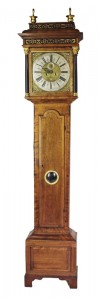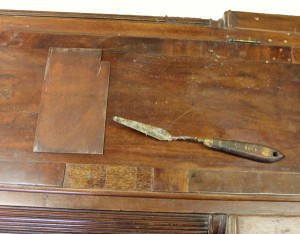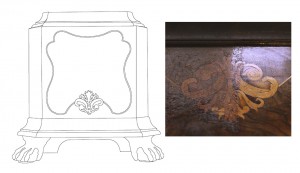We undertake clock case restoration
Clock Case Restoration is often overlooked by clock repairers. Unfortunate because the outward appearance of a clock case is of utmost importance in domestic furnishing.
With the passing of years and decades, clock cases gradually become dull and faded.
Contrary to the stated views of the Antiquarian Horological Society, we think that dating is very relevant to conservation. We research the historical and social context of a clock as the first step in any restoration or conservation programme. (horological and in general)
We use our expertise to assess the date of construction, the materials used and legacy of historical repair work during the preparation of a Condition Report.
The Condition Report is used as a basis for a Planned Restoration Programme which we document and use to explain the restoration steps to client.
Sometimes a clock case just needs a good clean to remove a build-up of airborne grime: Shellac polish has a finite lifetime before it starts to deteriorate. The characteristic symptoms of broken down polish are a tendency to being opaque with a greyish or yellowish tint. Shellac polish breaks down more readily with exposure to sunlight, but the fault is only superficial and easily fixed by removing the damaged polish with alcohol and re-applying.
Veneers often get dislodged and lost: we keep a very wide range of woods and veneers which we use to cut replacements. Crossbands are veneers laid with their end-grain to a straight edge. They are particularly vulnerable to damage and loss. especially in early cases where European Walnut crossbands are often mistaken for mahogany with resulting mismatches in previous repairs.
For more serious conservation work, detailed sketches are prepared to assist in the documentation and to allow notes to be made as the work progresses.




